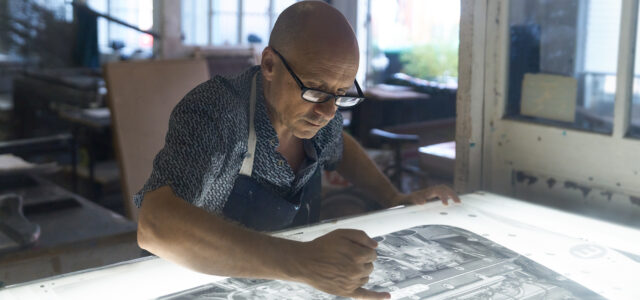
An Icon In Print
Amalgam is proud to be an official licensed partner of Aston Martin, capturing iconic models from the marque in both fine model and art print format
Famous for making the most perfect, large-scale model cars in the world, Amalgam Collection has teamed with artist Alan Thornton to capture some of Aston Martin’s most iconic models in precise, beautiful and deeply crafted prints. The new collection leads with two extraordinary cars, the Aston Martin Valkyrie and DB5.
At the disposal of owners of the most extreme and valuable Aston Martins, who may wish to commission unique collections of works distilling the beauty of their car into extraordinary pieces of art, Thornton undertakes a very small number of commissions each year.
Each project is defined and quoted on an individual basis and Alan’s deep experience with portrait photography opens the door to the creation of large format prints capturing both car and driver together, a format with exciting potential.
The work of Amalgam’s team of craftspeople is unique in its attention to detail, with a focus on creating models that truly capture the style and spirit of each car.
Skilled technique and creativity are essential to every stage of Alan’s art. The first chapter of his creative process takes the real car into the studio, shooting it in high resolution and taking infinite care with the lighting and angles. The outcome is a set of unique photographs, specifically created to meet the technical and artistic disciplines.
The second stage of Alan’s process involves digitally working the image, breaking down the image mechanically into numerous elements and complex dot patterns, that when printed will create the illusion of a full tonal range. Indeed, Alan’s masterful use of the demanding process that he has created for himself, takes the artwork beyond photographic realism to produce hyper-real levels of intensity, depth and vibrancy in the final printed image.
The third and final stage is the printing of unique one-off prints and limited editions employing the traditional hand screen printing process or dye sublimation. In both cases, rather than use a four-colour print process, the colours are defined and mixed to represent each element of the car’s paint and material finishes. For the traditional screen prints the process demands much careful mixing of the inks and the hand pulling of each colour to manage the spread of the dots onto the paper and achieve the desired outcome.
The Amalgam Collection and Alan Thornton Collection of fine art editions and dye transfer prints can be found at: amalgamcollection.com

